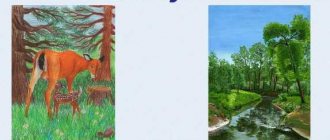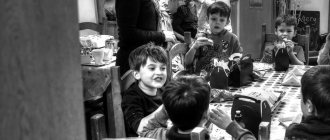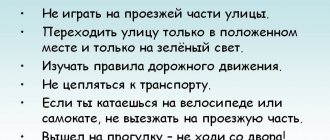Summer is a great holiday time for adults and children. Getting away from the city noise and smog, it’s so wonderful to hold various events in the forest. For children, any trip to the forest in the summer turns into an exciting adventure, full of riddles and secrets. There are so many interesting and unknown things around, and children’s curiosity takes over. If you do not follow the rules of behavior in the forest, such a trip can turn tragic for children. There are a number of rules and regulations that children must strictly follow to stay safe.
Safety regulations
If you go for a walk in the forest, carefully study the rules, following which you can ensure safety in the forest for children:
- Before you go on a hike, let your loved ones know where you are going. Knowing this, relatives will be able to seek help if necessary.
- Take dry matches, a watch and a compass on the road. Place a small knife in your pocket. It is possible that all this will come in handy on a forest walk.
- Bring extra food and water with you in case of delay. You should not eat unfamiliar berries or drink water from unknown sources.
- Wear bright outerwear, preferably with reflective details, so it will be easier for rescuers to notice you.
- Determine your route and stick to it at all times. There is no need to take shortcuts to get there faster if that means going through a swamp.
- If you have lost a friend, call rescuers immediately. There is no need to try to search on your own; you can destroy traces that will help in the search.
- Try to shout to the lost person, but try to stay in place.
- Bring first aid supplies on your hike. They may come in handy if someone gets sick.
- Inspect the road you are walking on so as not to fall into a hole and break your leg. Forest paths are not always well-trodden, this should not be forgotten.
- Don't leave trash behind, dig a hole in the ground and bury it. Never leave glass shards in the forest.
- Do not make a fire near trees; move at least 1.5 meters away from them. If you have a fireplace, you should not build a new one.
- When getting ready to go home, carefully extinguish the fire so that it does not start again after you leave. It is advisable to cover the fire with earth without scattering coals.
Summary of the lesson “Rules of behavior in the forest” in the senior group of kindergarten
Abstract of educational activities for cognitive development “Rules of conduct in the forest.”
Senior group Topic: “Rules of behavior in the forest” Goal: creating conditions for play and problem situations in consolidating children’s knowledge about the rules of behavior in nature. Objectives: Educational: Continue the formation of a generalized idea of the forest as a home of animals and plants that are in close relationships with each other. Developmental: Develop thinking, attention, ability to draw conclusions, speech. Educational: To cultivate a kind, responsible attitude towards nature. Material : Pictures of a forest, schematic drawings of rules of behavior in the forest, audio recording of bird voices.
Course of the lesson
1. Organizational moment We will stand in a circle together, We need to say hello. I say “Hello!” Smile back quickly. Hello left hand, Hello right hand, Hello friend, hello friend, Hello our entire friendly circle! — Children, our group received a letter from Old Lesovichka. Do you know who he is? (children's answers)
- In this letter, Old Man-Lesovichok invites children who know the rules of behavior in the forest well and follow them.
Now let’s remember the rules of conduct, and get to know some of them again. To get into the forest, you need to close your eyes and count to 10. Close your eyes and count together. (Children consider hanging pictures of the forest at this time and turning on music.)
- Children, we are in the forest, on a forest path.
The air is fresh, there are tall trees and bushes all around, birds are singing. What birds can you recognize by their voices? — We came to a forest clearing. So many flowers! So beautiful! What do we do? (let's admire it)
.
Let's break it? (impossible)
If I pick a flower, If you pick a flower, If everyone: both me and you, If we pick a flower, All the meadows will be empty and there will be no beauty.
— A flower that grew in a clearing is at home. Butterflies, bees, and bumblebees fly to him. They feed on nectar and pollinate plants. After flowering, seeds appear, fall into the ground, and flowers grow from them again. Can we pick a flower just to admire it? (of course not)
People specially grow garden flowers for bouquets.
What garden flowers do you know? — We remembered one of the rules of behavior in the forest, but there are many rules. I drew them to make it easier for you to remember. Look at this picture. (The hand picking flowers has an X sign on it. All other rules are depicted similarly)
.
Name the rule. “We stood in a forest clearing, admired the flowers, and then moved on. Suddenly we saw a fly agaric - a poisonous mushroom. What will you do: pass by or knock you down or trample? (Explain why you can’t pick up inedible mushrooms in the forest?)
Mushrooms serve as medicine and food for animals.
Mushrooms decorate the forest. (Among the pictures, find the rule about wild mushrooms)
.
“We passed by the fly agaric, we go further and see on the ground near the old fir trees someone’s house made of needles. What kind of house is this and who lives in it? It's interesting to see what the ants are doing in their anthill. There is a stick lying next to the anthill. Maybe we can take it and stir up the anthill? Let's go around the anthill so as not to destroy it and think about why ants are needed in the forest? Why are ants called forest orderlies? (Find the rule about ants among the pictures)
.
— We walk further through the forest, listening to the birds singing. Here is a bird's nest on the tree branches. It is very low, you can even see bird eggs in it. Shall we run to the nest? Maybe we'll take some eggs? They are beautiful, blue speckled. And here is another nest, with naked chicks in it. They were probably frozen. Let's hold it in our hands, warm it up and put it back. The parent birds did not abandon the chicks, they were frightened of us and are flying somewhere nearby. Is it possible to do this? You can't get close to the nests. As soon as we leave, they will fly up to the nest, warm and feed the chicks. (Find a picture with a rule and bird nests)
.
Listen to the poem: A nest on a branch is a bird’s house, Yesterday a chick was born in it, Don’t ruin the bird’s house, And don’t let anyone. Physical education lesson One - two - three - four - five - Let's go for a walk in the forest. (Regular walking)
We will slowly walk along the winding paths.
(Walking “snake”)
.
Maybe we’ll find a sweet berry under the leaf. The children stood on their toes and ran along the paths. (Running on toes)
And we'll walk in heels, We'll cross the puddles.
(Walking on heels)
.
- We had a rest, that’s nice. Let's talk now about the main thing. - Children, we always walk along the path. Is it possible to walk and run on grass in the forest? (Find a rule that says you should walk on paths in the forest.)
Why?
Because there are many insects living in the grass, we can crush them. Some birds make nests on the ground in long grass, we can step on them. A butterfly landed on a flower. Let's catch it and see how beautiful its wings are. Whoever has a net, catch it quickly! Is it possible to do this? Why are butterflies, beetles, dragonflies, and bumblebees needed in the forest? (insects pollinate flowers, decorate nature, insects are food for birds, frogs, toads, hedgehogs)
.
(Look at the picture with the rule, what does it say?)
The rule says that you don’t need to come into the forest with a net, you don’t need to catch insects.
- Let's go further along the path. I see a web. This is a spider. He pulled the nets between the bushes. Maybe a spider is not needed in the forest? (Look at the picture)
.
What does this picture say? Why don't you tear down the web? Because spiders are useful animals. They eat aphids, mosquitoes, flies. Let's not knock down the web, let the spider lie in wait for its prey. Someone rustled in the grass. Guess a riddle . Angry touchy lives in the wilderness of the forest, There are a lot of needles, But not a single thread. Beautiful cute hedgehog. (picture)
- Let's take him to our group?
But will he be happy with us? A hedgehog is at home in the forest. The forest needs it, it brings benefits, and in our group the hedgehog will benefit the forest? (No)
.
Let's not take the hedgehog, let him live at home. No forest animals need to be taken home. — Children, why do we need rules of behavior in the forest? Why does Old Man Lesovichok invite only those guys who know the rules? What happens if people don't follow the rules? Flowers will disappear, insects will die, birds will fly away, trees will get sick, animals will scatter. The forest will be boring, dull and ugly. Guys, you are big, you must follow these rules and tell your friends, kids and adults, about them. Summary of the lesson Our walk through the forest is over. Let's get back to the group. Close your eyes, count to 10. (While the children are counting, remove the pictures of the forest)
.
Here we are in the group. If we follow these rules and tell the children of the younger group so that they know them and follow them, then the Old Man-Lesovichok will happily welcome guests in his forest. Reflection - Children, did you enjoy your walk in the forest? — What did you learn new? — Did everyone remember the rules of conduct in the forest?
We recommend watching:
Summary of educational activities in the senior group “Northern Adventures” Summary of a conversation with children of senior preschool age Summary of educational activities in speech therapy for the senior group Methodological development of a summary of an excursion for children of senior preschool age
Similar articles:
Summary of a mathematics lesson in the senior group of kindergarten. Geometric figures
Rules of behavior in the forest
While in the forest, children must follow a number of simple rules of behavior:
- Stay constantly close to your loved ones, or within their visibility range.
- Do not pick or try unknown berries and mushrooms, they can be poisonous.
- Do not touch animals or insects. They can bite or carry serious infections. Do not pet or handle small cubs, as this can lead to serious consequences.
- Do not go close to lakes and reservoirs, and do not go into the water without adult permission. Water can hide many secrets, you need to remember this.
- At the first danger, immediately call an adult. There is no need to try to cope with the problem on your own; adult help will definitely come in handy.
Reminder in pictures for preschoolers
When going for a walk in the forest, it would not be superfluous to once again remind preschool children about safe behavior in the forest. For children, rules of behavior and safety in the forest have been developed in pictures.
Each drawing is bright and catchy, attracts the child’s attention; stories in pictures about safety in the forest for children can be written in a convenient poetic form and are better remembered by children.
For example:
“You can’t throw glass in the forest, You can’t break bottles; Sharp fragments are dangerous - you will cut yourself terribly on them.”
By studying pictures in the form of a game, the child easily learns what can and cannot be done during forest walks. Compliance with forest laws is the key to the safety of adults and children.
The rules of behavior in nature for children, shown in the pictures, clearly demonstrate to the child how to behave so that trouble does not happen.
We organize the trip correctly
Children are curious and spontaneous creatures. No matter how well they learn the rules of behavior in the forest, once they are “in place” they can simply forget, get confused or get carried away by new experiences. Therefore, all responsibility falls on the shoulders of adults. Safety in the forest depends not only on the rules of behavior, but also on the organization of the trip. Adults should approach this with all seriousness, without missing a single important detail:
- Choosing a location. There are no “unexplored paths”; the hiking location must be safe, repeatedly traveled and known to the adults accompanying the children. You should not go deep into the forest, even if you know these places well. Wildlife is unpredictable.
- It's time to go. Choose the first half of the day for a hike in the forest. Don't forget that it gets dark in the forest earlier than in the city. The approaching twilight may make it difficult for you to get your bearings.
- Provisions. When going on a hike in the forest, take care of a snack. No raw meat - making a fire in a forest area is prohibited and dangerous. Let it be bread, salads, canned food, sausages and cheeses. Don't forget about drinking water. There should be enough of it, as well as food.
- Protection from insects. Everyone knows that there are much more bugs and mosquitoes of all kinds in the forest than in the city. Therefore, the backpack should have ointments, insect repellent sprays, and children (as well as you) should have scarves, panama hats and caps on their heads.
- Ratio of adults to children. There should be a lot of adults. Even if one or two teachers can easily cope with an entire class in the theater and museum, when going into the forest, enlist the support of parents and other teachers. Even the most obedient children in nature, when relaxing, behave more actively. Curiosity pushes children to violate even the strictest prohibitions, so they need to be monitored every minute. The younger the children, the more accompanying persons there should be. For a group of preschoolers, the ratio should ideally be “1 adult to 5 children.”
Safety and behavior rules for preschool children on transport
In addition, you should have all the necessary items on hand:
- Knife;
- Matches;
- Compass;
- Fully charged phone and portable battery, if available;
- Flashlight;
- First aid kit.
How to protect yourself from tick bites
The safety of children while walking in the forest directly depends on the attentiveness and responsibility of adults. Tick habitats cannot be determined visually. Therefore, it is important to know how to avoid their bites.
You need to dress your child correctly. White clothing on which ticks can be seen immediately is ideal. Completely protect your legs with high socks or tights, and tuck a T-shirt into them. Outerwear must have elastic bands, shoes must be completely closed, and a hat or scarf must be placed on the head.
It is necessary to take with you special preparations – repellents, which are periodically applied to the baby’s clothes. The child should be periodically examined to identify unwanted insects.
If, even with all the precautions taken, the baby is bitten by a tick, you must bring the insect for analysis. If analysis is not possible, the date of the bite should be recorded and the child monitored for three weeks. A runny nose, swelling or rash requires immediate medical attention.









